Why Integrate
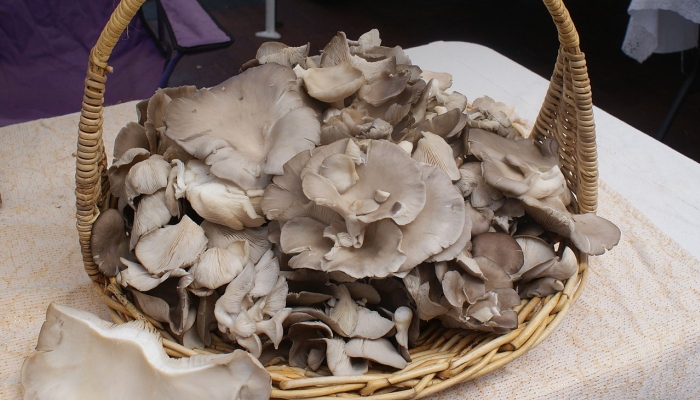
But first, what is an integrated mushroom production programme? An integrated mushroom production programme is one where all forward and backward linkages of the mushroom value chain are integrated to maximize customer satisfaction, quality and product variety.
There is an economic logic as to why such integration is essential for the Indian market. At present the market for mushrooms in India is fairly small (when compared to neighbouring East Asian and South East Asian countries), fragmented and characterized by a lack of awareness and specialization, both of mushrooms and of technologies for handling the various stages of mushroom value-addition.
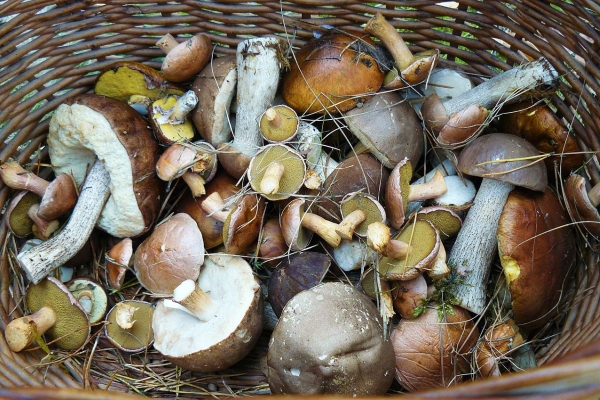
According to Ronald Coase, who, in his seminal article, The Nature of the Firm (for which he won the 1991 Nobel Prize for Economics), showed that the purpose for the existence of a firm is to minimize transaction costs for without transaction costs there would be no purpose in setting up a firm since everything could be sub-contracted. In India, where transaction costs are high, indeed very high, due to the abovementioned problems of smallness of the market, fragmentation and lack of standardization and awareness about the mushroom value-addition chain it makes sense to produce things in-house rather than contract with a third party.
However, if in the future, ground realities change and mushrooms become a more integral part of the everyday diet, it might be possible to sub-contact activities along the value chain and reduce the inherent complexities of the integrated mushroom production programme.
What Mushroom to Choose
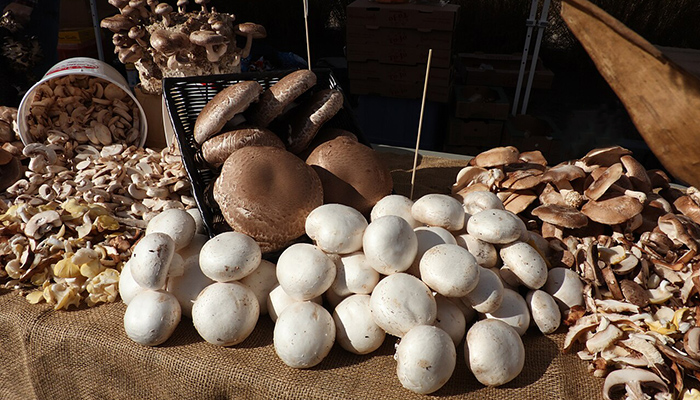
So far, in India, the diversity of mushrooms, value-added mushroom products and mushroom food items is extremely limited. Mushrooms are broadly of two types: namely, temperate mushrooms which flourish at temperatures below 20°C and tropical mushrooms which prefer growing at temperatures above that.
Despite the fact that India is mainly a tropical country, mushroom production in India is mainly confined to white button mushrooms, which being a mushroom for temperate climates like those found in Europe and North America is not really suitable for the Indian climate outside the Himalayas and the Eastern and Western Ghats.
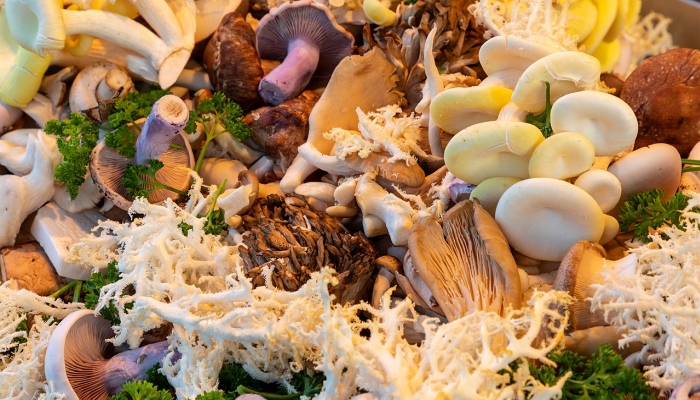
Other mushrooms cultivated in India include the oyster mushroom and the paddy straw mushroom. Being tropical mushrooms they are far more suitable for climatic conditions that prevail in the plains of India over most of the year. However they are only grown in relatively small quantities.
Why Oyster Mushrooms
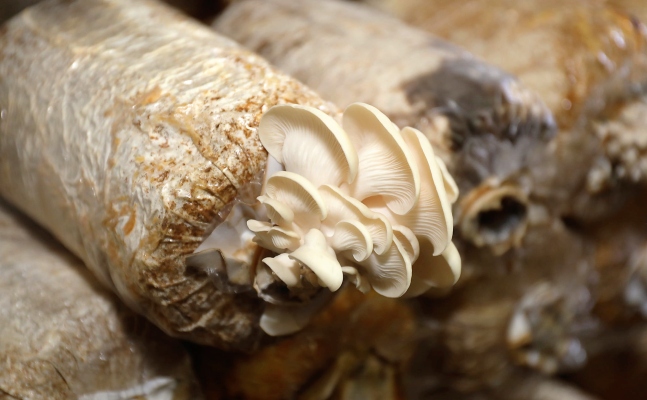
At Palash Blossom Estate we have decided to make oyster mushrooms the focal point of our value chain. This is not to denigrate other varieties of mushrooms but to accept the simple fact that in a primarily tropical country like India it is better to grow tropical mushrooms than temperate mushrooms. Relying on temperate mushrooms as a mainstay for production is like trying to fit a square peg in a round hole.
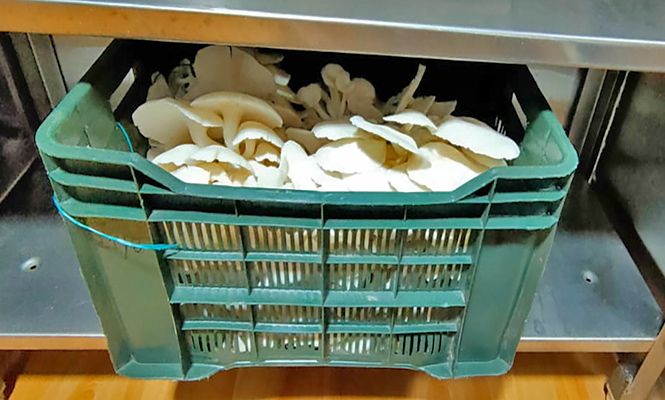
Among tropical mushrooms, the oyster mushroom is by far the hardiest and most resilient to temperature variations. When refrigerated it has a decent shelf life of around two weeks. Unlike button or paddy straw mushrooms, oyster mushrooms can be sun-dried or oven dried and this can extend their shelf life to over one year. Later these dried oyster mushrooms can be rehydrated and used for cooking purposes. Finally the texture of oyster mushrooms lends itself admirably to a wide range of mushroom products and food items.
All these benefits make oyster mushrooms, to use the jargon of computer science and information technology, the Killer App among mushrooms.
The Mushroom Value Chain
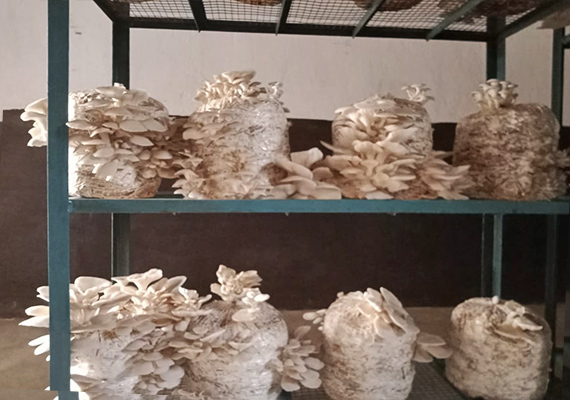
S. T. Chang and S. P. Wasser, in their survey article, The Cultivation and Environmental Impact of Mushrooms, outline the seven major steps involved in mushroom cultivation. They are:
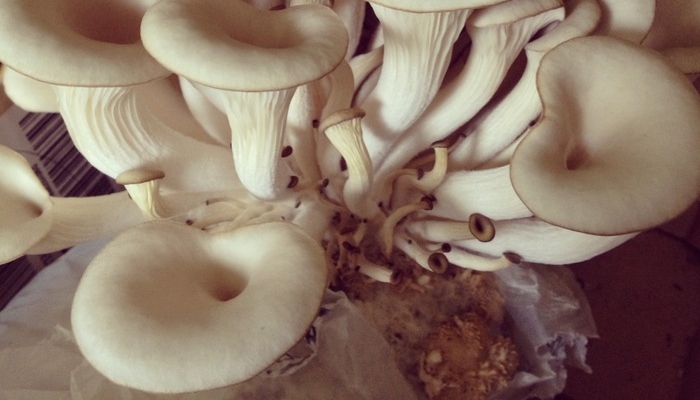
As already stated above, at Palash Blossom Estate we consider oyster mushrooms as the most acceptable mushroom species from a commercial and nutritious point of view (step 1). The next six steps can be clubbed into two phases of the mushroom value chain: namely the mushroom spawn production phase (which consists of step 2 to 3) and the mushroom mycelial running and fruiting phase (which consist of step 4 to 7). To this can be added a third phase of the mushroom value chain: post harvesting activities which include the preparation of value added mushroom products.
Thus from an economic point of view the three major phases of the mushroom value chain are:
At Palash Blossom Estate we are actively involved in all three phases of the mushroom value chain and this helps provide the foundation of our integrated mushroom production programme. Given the nascent stage of the Indian mushroom market this integrated approach helps minimize transaction and monitoring costs.
Mushroom Spawn Production
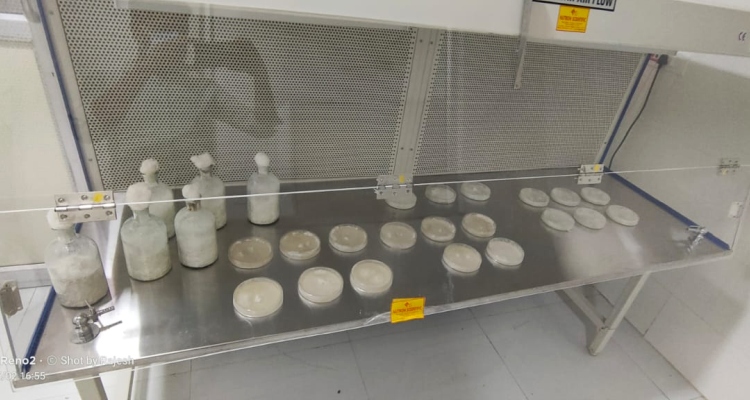
Mushroom spawn production is carried out at our state-of-the-art Mushroom Spawn Nursery-cum-Laboratory at Palash Blossom Estate. A spawn laboratory plays a role similar to that of a nursery in floricultural and horticultural farms and hence the term nursery and spawn laboratory can be used interchangeably.
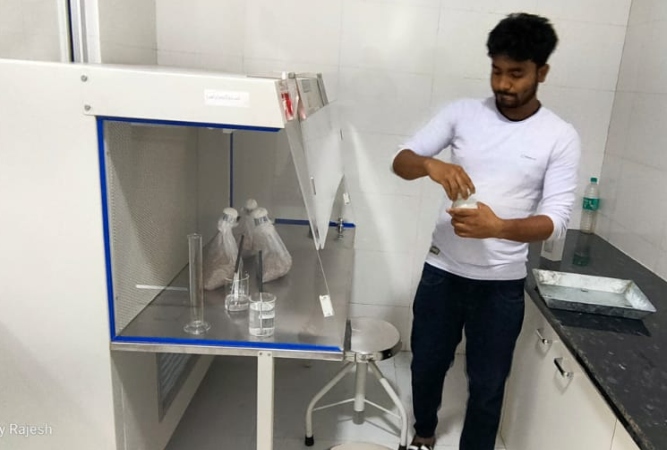
The Mushroom Spawn Nursery-cum-Laboratory at Palash Blossom Estate contains the following rooms (which corresponds to the various activities or steps involved in mushroom spawn production):
- Tissue Culture Room: This room is the heart of the entire operations of the laboratory and requires extremely high standards of cleanliness. Here tissue or spores of mushrooms are cloned or multiplied in test tubes and petri dishes in exceptionally sterile and sanitized conditions.
- Inoculation Room: Here master grain spawn and commercial grain spawn is inoculated and prepared before a laminar flow hood. This is done to minimize the chances of infection during mycelial transfer.
- Autoclave Room: Autoclaves are actually large pressure cookers. Since every item in the laboratory needs to be sterilized and free of germs, everything, from test tubes, petri dishes, scalpels, inoculation needles to master and commercial grain spawn has to be sterilized in an autoclave before use.
- Incubation Room: Here the mycelia inside test tubes, petri dishes, master and commercial grain spawn are allowed to incubate over a period of a few weeks under optimal temperature conditions. For oyster mushrooms this is usually 24°C. To achieve this, the incubation room is perfectly insulated and air-conditioned in order to maintain a constant temperature.
- Cold Storage Room: This is a walk in refrigerator which is perfectly insulated and where the temperature is maintained at a constant 5°C. Here spawn (both master and commercial) and fresh mushrooms are kept before being processed or sold.
- Work Area: Here grain is parboiled with appropriate quantities of clean water in large pans on gas burners. After cooling and drying, the semi-cooked grain is mixed with gypsum and calcium carbonate on the work table and then bagged before being taken to the Autoclave Room for sterilization.
Mushroom Mycelia Running and Fruiting
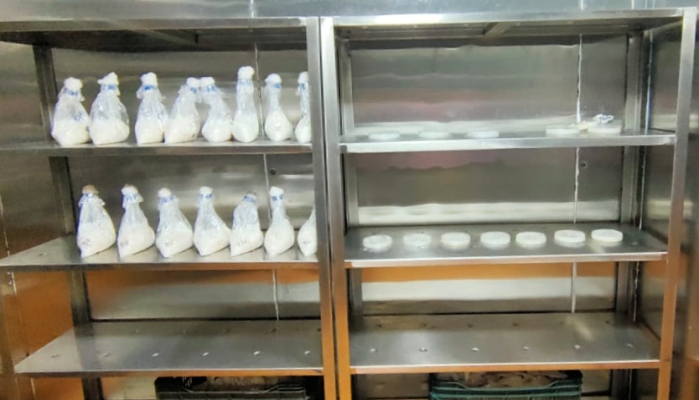
The vegetative (running) and fruiting stage of mushroom cultivation is carried out in mushroom huts. Our mushroom huts are made of mud, brick and locally available material. They have been built, not by a civil contractor, but by the workers of Palash Blossom Estate who are mainly Santhals and live nearby. This was purposefully done in order to demonstrate that mushrooms can be grown using technology and techniques that are available and affordable to the poor. As a philosophical and policy matter, if ever faced with the problem of having to choose between a labour intensive and an energy or capital intensive technique, at Palash Blossom Estate, we will always prefer the labour intensive technical choice. As an embellishment our mushrooms huts have been painted with floral and animal wall art motifs by local Santhal artists from the Ajodhya Hills.
The rooms of the mushroom huts are of two types: those for mycelia/ vegetative growth and those for mushroom fruiting. The former rooms are kept fairly dark while the fruiting rooms have greater light, air circulation and humidity. Though oyster mushrooms can be grown under natural conditions for almost ten months of the year, desert coolers have been installed in the fruiting room in order to reduce temperature and increase humidity during the summer months.
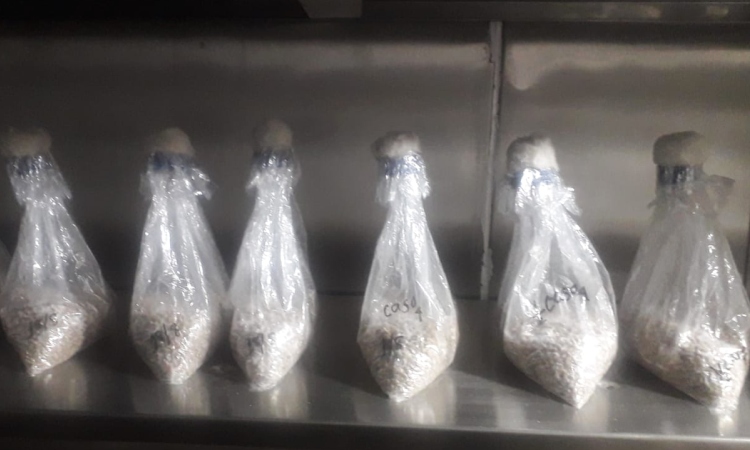
To grow mushrooms, cut straw (either paddy or wheat straw) is pasteurized by soaking and heating it in a large pot of hot water for one to two hours. After cooling the pasteurized straw is mixed with spawn and stuffed tightly inside polythene bags which are either placed on shelves or hung by ropes from the ceiling in the mycelia/ vegetative growth room. After around two weeks, when the spawn has completed covered the straw substrate and the bag has turned white, the bag is then shifted to the fruiting room. Once the mushrooms start to fruit from openings in the bag, the mushrooms are harvested and kept in cold storage facilities before they are further processed.
Mushroom Post Harvesting/Value Added Production
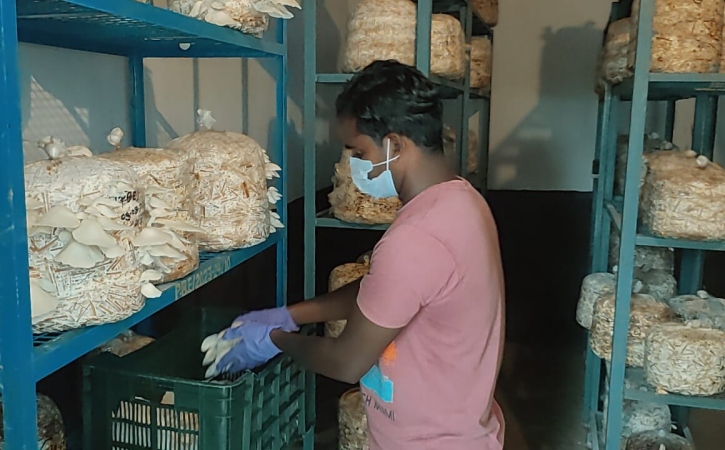
The harvested mushrooms can either be sold as fresh or dried mushrooms or used as a part of value added mushroom products.
At Palash Blossom Estate, we prefer using them as mushroom based snacks and food items or in value added mushroom products.
There is a reason for making such a choice. One of the greatest constraints to the development of the mushroom market in India is the lack of awareness of how to consume these mushrooms on a daily basis.
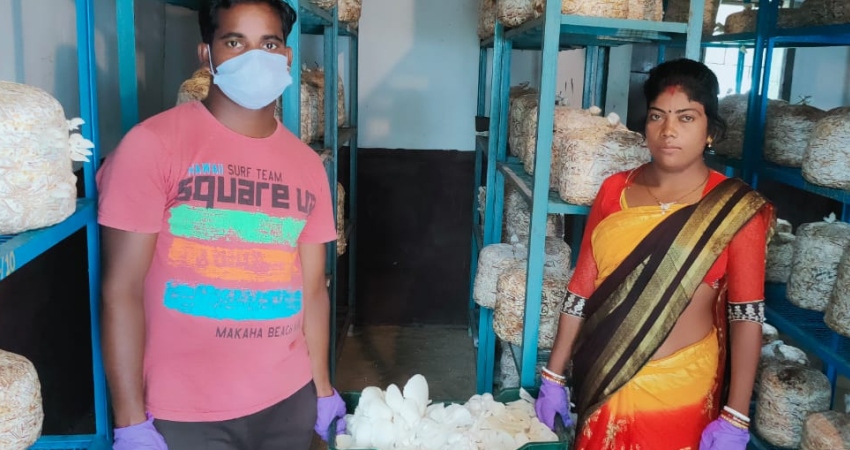
As stated earlier, one of our key our goals at Palash Blossom Enterprise is to make mushrooms an integral part of our nation's diet by opening up possibilities of using mushrooms in our everyday Indian cuisine.
This can be best done incorporating mushrooms in those snacks and food items that are widely eaten in India since time immemorial.
Palash Blossom Shop
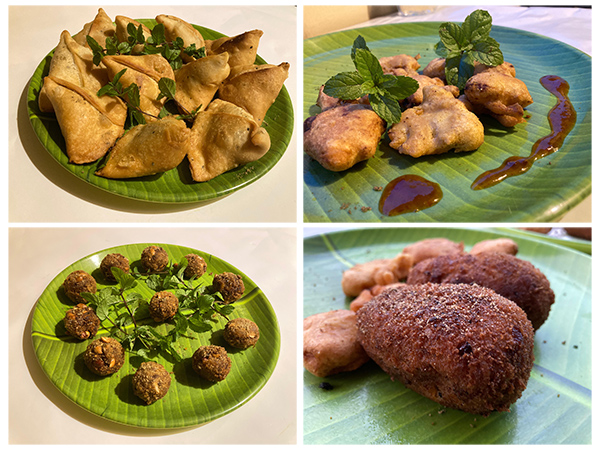
Plash Blossom Shop is located near the entrance to Palash Blossom Estate in the Ajodhya Hills. It is unique in the sense that it is India's first mushroom themed shop and snack bar. As of December 2023, apart from tea, soft drinks and some non-mushroom snacks we will be serving the following mushroom based snacks:
The following mushroom products will also be available at Palash Blossom Shop:
Most of these items have long been a part of the daily diet of Indians from all walks of life. What makes them unique is that mushrooms are their key input. Our goal at Palash Blossom Estate is to slowly increase the range of mushroom based snacks and food products so that eventually mushrooms are as widely eaten as brinjal, cabbage and cauliflower.
------------
[ Click here ] to download a PDF version of the Integrated Mushroom Production Programme at Palash Blossom Estate.

